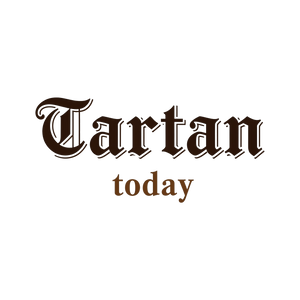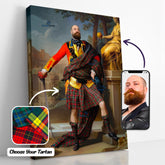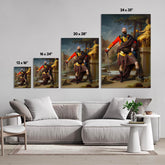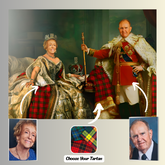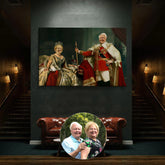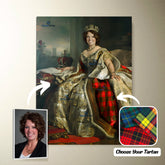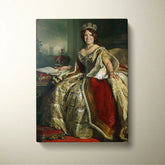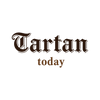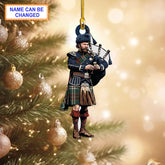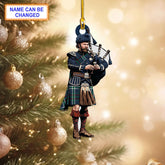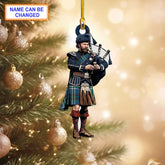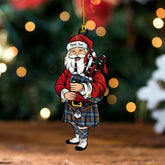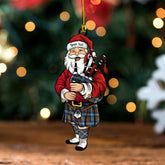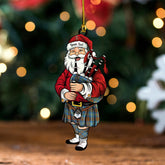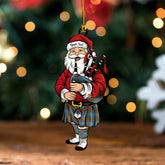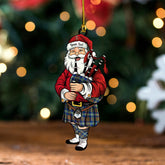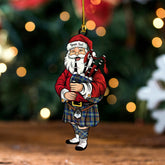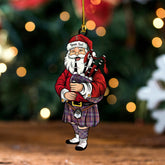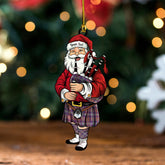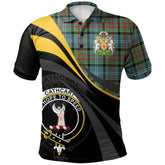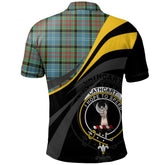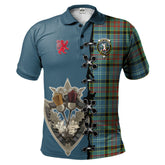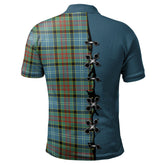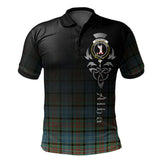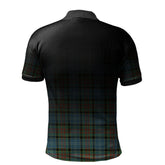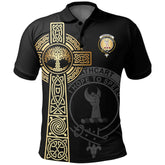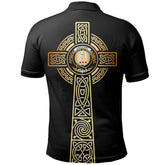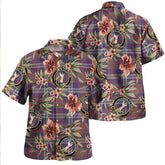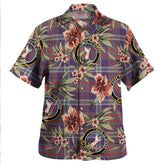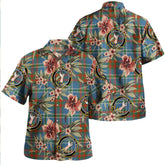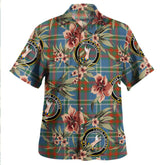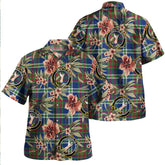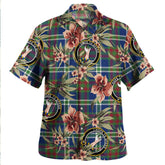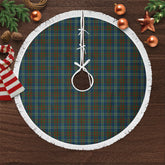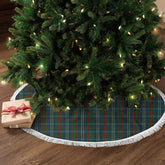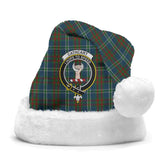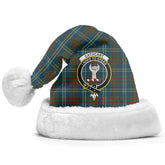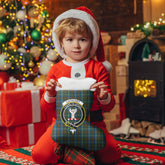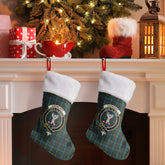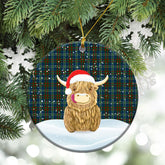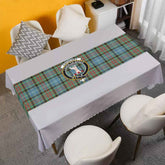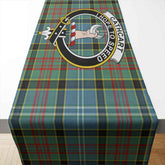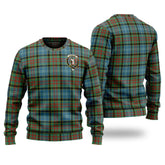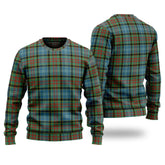-
Personalized Clan Cathcart Reproduction Tartan Bagpipe Ornament with Custom Name – Scottish Christmas Tree Decoration FN43
Personalized Clan Cathcart Reproduction Tartan Bagpipe Ornament with Custom Name – Scottish Christmas Tree Decoration FN43Celebrate your Scottish heritage with this unique wood & acrylic tartan ornament. Perfect as a personalized Christmas decoration or a meaningful gift for friends and relatives on special occasions...- From $19.99 USD
$25.99 USD- From $19.99 USD
- Unit price
- per
Save $6.00 -
Personalized Clan Cathcart Modern Tartan Bagpipe Ornament with Custom Name – Scottish Christmas Tree Decoration JI33
Personalized Clan Cathcart Modern Tartan Bagpipe Ornament with Custom Name – Scottish Christmas Tree Decoration JI33Celebrate your Scottish heritage with this unique wood & acrylic tartan ornament. Perfect as a personalized Christmas decoration or a meaningful gift for friends and relatives on special occasions...- From $19.99 USD
$25.99 USD- From $19.99 USD
- Unit price
- per
Save $6.00 -
Personalized Clan Cathcart Ancient Tartan Bagpipe Ornament with Custom Name – Scottish Christmas Tree Decoration WM58
Personalized Clan Cathcart Ancient Tartan Bagpipe Ornament with Custom Name – Scottish Christmas Tree Decoration WM58Celebrate your Scottish heritage with this unique wood & acrylic tartan ornament. Perfect as a personalized Christmas decoration or a meaningful gift for friends and relatives on special occasions...- From $19.99 USD
$25.99 USD- From $19.99 USD
- Unit price
- per
Save $6.00 -
Personalized Clan Cathcart Modern Clan Crest Tartan Santa Ornament – Custom Acrylic Christmas Decoration HC60 - Cathcart
Personalized Clan Cathcart Modern Clan Badge Tartan Ornament – Custom Acrylic Christmas Decoration HC60Celebrate your Scottish heritage with this unique wood & acrylic tartan ornament. Perfect as a personalized Christmas decoration or a meaningful gift for friends and relatives on special occasions such as...- From $19.99 USD
- From $19.99 USD
- Unit price
- per
-
Cathcart
-
Personalized Clan Cathcart Ancient Clan Crest Tartan Santa Ornament – Custom Acrylic Christmas Decoration LI37 - Cathcart
Personalized Clan Cathcart Ancient Clan Badge Tartan Ornament – Custom Acrylic Christmas Decoration LI37Celebrate your Scottish heritage with this unique wood & acrylic tartan ornament. Perfect as a personalized Christmas decoration or a meaningful gift for friends and relatives on special occasions such as...- From $19.99 USD
- From $19.99 USD
- Unit price
- per
-
Cathcart
-
Personalized Clan Cathcart Modern Clan Crest Tartan Santa Ornament – Custom Acrylic Christmas Decoration MP91 - Cathcart
Personalized Clan Cathcart Modern Clan Badge Tartan Ornament – Custom Acrylic Christmas Decoration MP91Celebrate your Scottish heritage with this unique wood & acrylic tartan ornament. Perfect as a personalized Christmas decoration or a meaningful gift for friends and relatives on special occasions such as...- From $19.99 USD
- From $19.99 USD
- Unit price
- per
-
Cathcart
-
Personalized Clan Cathcart Weathered Clan Crest Tartan Santa Ornament – Custom Acrylic Christmas Decoration HL54 - Cathcart
Personalized Clan Cathcart Weathered Clan Badge Tartan Ornament – Custom Acrylic Christmas Decoration HL54Celebrate your Scottish heritage with this unique wood & acrylic tartan ornament. Perfect as a personalized Christmas decoration or a meaningful gift for friends and relatives on special occasions such as...- From $19.99 USD
- From $19.99 USD
- Unit price
- per
-
Cathcart
-
Clan Cathcart Tartan Polo Shirt - Royal Coat Of Arms Style FA66 - Cathcart Tartan
Clan Cathcart Tartan Polo Shirt - Royal Coat Of Arms Style FA66 Description: Crafted in 100% polyester with your own design which combines comfort and vogue. This shirt has some'great features, it has 3 buttons, elastic collar and cuffs. 12.35 Oz. Made from polyester...- $38.25 USD
- $38.25 USD
- Unit price
- per
-
Cathcart Tartan
-
Clan Cathcart Tartan Polo Shirt - Lion Rampant And Celtic Thistle Style XN39 - Cathcart Tartan
Clan Cathcart Tartan Polo Shirt - Lion Rampant And Celtic Thistle Style XN39 Description: Crafted in 100% polyester with your own design which combines comfort and vogue. This shirt has some'great features, it has 3 buttons, elastic collar and cuffs. 12.35 Oz. Made from...- $38.25 USD
- $38.25 USD
- Unit price
- per
-
Cathcart Tartan
-
Clan Cathcart Tartan Polo Shirt - Alba Celtic Style OQ78 - Cathcart Tartan
Clan Cathcart Tartan Polo Shirt - Alba Celtic Style OQ78 Description: Crafted in 100% polyester with your own design which combines comfort and vogue. This shirt has some'great features, it has 3 buttons, elastic collar and cuffs. 12.35 Oz. Made from polyester fabric. 3...- $38.25 USD
- $38.25 USD
- Unit price
- per
-
Cathcart Tartan
-
Clan Cathcart Clan Unisex Polo Shirt - Celtic Tree Of Life YW44 - Cathcart Tartan
Clan Cathcart Clan Unisex Polo Shirt - Celtic Tree Of Life YW44 Description: Crafted in 100% polyester with your own design which combines comfort and vogue. This shirt has some'great features, it has 3 buttons, elastic collar and cuffs. 12.35 Oz. Made from polyester...- $38.25 USD
- $38.25 USD
- Unit price
- per
-
Cathcart Tartan
-
Cathcart Weathered Tartan Clan Crest Badge Aloha Hawaiian Shirt Tropical Old Style WM67 - Cathcart Weathered Tartan
Cathcart Weathered Tartan Clan Crest Badge Aloha Hawaiian Shirt Tropical Old Style WM67 These Hawaiian shirts and shorts are suitable for hot summer days or beach trips with your friends, family, and loved ones. This is an excellent gift, vacation outfit, or simply revamp...- $43.25 USD
- $43.25 USD
- Unit price
- per
-
Cathcart Weathered Tartan
-
Cathcart Ancient Tartan Clan Crest Badge Aloha Hawaiian Shirt Tropical Old Style LQ69 - Cathcart Ancient Tartan
Cathcart Ancient Tartan Clan Crest Badge Aloha Hawaiian Shirt Tropical Old Style LQ69 These Hawaiian shirts and shorts are suitable for hot summer days or beach trips with your friends, family, and loved ones. This is an excellent gift, vacation outfit, or simply revamp...- $43.25 USD
- $43.25 USD
- Unit price
- per
-
Cathcart Ancient Tartan
-
Cathcart Modern Tartan Clan Crest Badge Aloha Hawaiian Shirt Tropical Old Style QV36 - Cathcart Modern Tartan
Cathcart Modern Tartan Clan Crest Badge Aloha Hawaiian Shirt Tropical Old Style QV36 These Hawaiian shirts and shorts are suitable for hot summer days or beach trips with your friends, family, and loved ones. This is an excellent gift, vacation outfit, or simply revamp...- $43.25 USD
- $43.25 USD
- Unit price
- per
-
Cathcart Modern Tartan
-
Clan Cathcart Tartan Christmas Tree Skirt AJ56 - Cathcart Tartan
Clan Cathcart Tartan Christmas Tree Skirt AJ56 Product detail: 100% polyester tricot fabric, thick and durable. Suitable for not only Christmas but also the whole winter. Velcro closure and center hole allows for easy installment and removal. One-side Printing Machine washable on cold cycle...- From $48.25 USD
- From $48.25 USD
- Unit price
- per
-
Cathcart Tartan
-
Clan Cathcart Tartan Crest Christmas Santa Hat FC34 - Cathcart Tartan
Clan Cathcart Tartan Crest Christmas Santa Hat FC34 Product Detail: Material: Polyester Design Area: Single side full width printing Sizes:'S (26 x 38 cm); L (32.5 x 45 cm)- From $25.41 USD
- From $25.41 USD
- Unit price
- per
-
Cathcart Tartan
-
Clan Cathcart Tartan Crest Christmas Stocking AE67 - Cathcart Tartan
Clan Cathcart Tartan Crest Christmas Stocking AE67 DESCRIPTION: Christmas Stocking is used to display as home decoration or meaningful gifts for friends and relatives on special occasions such as Christmas, Valentine, birthday' Dimensions: (Cuff Width x Length x Width): 20 x 40 x 28...- $24.45 USD
- $24.45 USD
- Unit price
- per
-
Cathcart Tartan
-
Clan Cathcart Tartan Christmas Ceramic Ornament Highland Cows Style HY69 - Cathcart Tartan
Clan Cathcart Tartan Christmas Ceramic Ornament Highland Cows Style HY69 Product Detail:One of the best things about Christmas is that it gives you an excuse to dress up your home with all of the lovely ornaments we associate with the holiday season. With so...- From $14.45 USD
- From $14.45 USD
- Unit price
- per
-
Cathcart Tartan
-
Clan Cathcart Tartan Crest Table Runner Cotton DG75 - Cathcart Tartan
Clan Cathcart Tartan Crest Table Runner Cotton DG75 Product detail: Made of durable cotton linen cloth material. Lightweight, durable and could be folded away compactly. Multi-function, stylish decor to any room or table. Gentle hand wash separately in cold water; no shrinkle; no color...- $41.15 USD
- $41.15 USD
- Unit price
- per
-
Cathcart Tartan
-
Clan Cathcart Tartan Christmas Ugly Sweater ZO82 - Cathcart Tartan
Cathcart Tartan Clan Christmas Ugly Sweater ZO82 Product Detail: Each sweater is constructed from a premium woven polyester that is ultra-soft and incredibly comfortable. Features a specialty high definition heat-dye application that ensures long lasting color vibrancy even after machine washing. Fabric is durable...- $48.45 USD
- $48.45 USD
- Unit price
- per
-
Cathcart Tartan
Ex: Your Tartan + Product
Popular Products
Turn Me Royal Personalized Portrait from Your Photo, Custom Tartan. Custom Canvas Wall Art as Gift for Men
- From $32.45 USD
- From $32.45 USD
- Unit price
- / per
Royalty Couple Personalized Portrait from Your Photo, Custom Tartan. Custom Canvas Wall Art
- From $47.45 USD
- From $47.45 USD
- Unit price
- / per
The Queen Personalized Portrait from Your Photo, Custom Tartan. Custom Canvas Wall Art as Gift for Women
- From $32.45 USD
- From $32.45 USD
- Unit price
- / per
Which Clan Are You From?
List Of Tartan
-
Clan A
- Abercrombie Tartan
- Aberdeen Tartan
- Abernethy Tartan
- Adair Tartan
- Adam Tartan
- Ayrshire Tartan
- Agnew Tartan
- Aikenhead Tartan
- Ainslie Tartan
- Aiton Tartan
- Allan Tartan
- Alexander Tartan
- Allardice Tartan
- Allison Tartan
- Anderson Tartan
- Angus Tartan
- Anstruther Tartan
- Arbuthnot Tartan
- Armstrong Tartan
- Arnott Tartan
- Auchinleck Tartan
- Ayrshire Tartan
-
Clan B
- Baillie Tartan
- Bain Tartan
- Baird Tartan
- Balfour Tartan
- Bannatyne Tartan
- Bannerman Tartan
- Barclay Tartan
- Baxter Tartan
- Beaton Tartan
- Bell Tartan
- Belshes Tartan
- Bethune Tartan
- Beveridge Tartan
- Binning Tartan
- Bisset Tartan
- Blackadder Tartan
- Blackstock Tartan
- Black Watch Tartan
- Blair Tartan
- Blane Tartan
- Blyth Tartan
- Borthwick Tartan
- Boswell Tartan
- Bowie Tartan
- Boyd Tartan
- Boyle Tartan
- Brisbane Tartan
- Brodie Tartan
- Brown/ Broun Tartan
- Bruce Tartan
- Buccleuch Tartan
- Buchan Tartan
- Buchanan Tartan
- Burnett Tartan
- Burns Tartan
- Butter Tartan
- Byres Tartan
-
Clan C
- Cairns Tartan
- Calder Tartan
- Callander Tartan
- Cameron Tartan
- Campbell Tartan
- Campbell of Breadalbane Tartan
- Campbell of Cawdor Tartan
- Carmichael Tartan
- Carnegie Tartan
- Carruthers Tartan
- Cathcart Tartan
- Chalmers Tartan
- Charteris Tartan
- Chattan Tartan
- Cheyne Tartan
- Chisholm Tartan
- Christie Tartan
- Clark Tartan
- Clelland Tartan
- Clephan Tartan
- Clergy Tartan
- Cochrane Tartan
- Cockburn Tartan
- Colquhoun Tartan
- Colville Tartan
- Cooper Tartan
- Couper Tartan
- Craig Tartan
- Cranstoun Tartan
- Crawford Tartan
- Crichton Tartan
- Crief District Tartan
- Crosbie Tartan
- Cumming Tartan
- Cunningham Tartan
- Currie Tartan
- Clan D
- Clan E
- Clan F
- Clan G
- Clan H
- Clan I
- Clan J
- Clan K
- Clan L
-
Clan M
- Maitland Tartan
- Malcolm Tartan
- Mar Tartan
- Marjoribanks Tartan
- Maxtone Tartan
- Matheson Tartan
- Maule Tartan
- Maxwell Tartan
- Meldrum Tartan
- Melville Tartan
- Menzies Tartan
- Mercer Tartan
- Middleton Tartan
- Moffat Tartan
- Moncrieffe Tartan
- Montgomery Tartan
- Monypenny Tartan
- Moncreiffe Tartan
- Monteith Tartan
- Morrison Tartan
- Mouat Tartan
- Moubray Tartan
- Mow Tartan
- Muir_More Tartan
- Muirhead Tartan
- Munro Tartan
- Murray Tartan
- Murray of Atholl Tartan
-
Clan Mc/Mac
- MacAlister Tartan
- MacArthur Tartan
- MacAlpine Tartan
- MacAulay Tartan
- MacBain Tartan
- MacBean Tartan
- MacBeth Tartan
- MacCallum Tartan
- MacCraig Tartan
- MacColl Tartan
- MacCorquodale Tartan
- MacDiarmid Tartan
- MacDonald Tartan
- MacDonald of Clanranald Tartan
- MacDonald of Sleat Tartan
- MacDonnell of Glengarry Tartan
- MacDonnell of Keppoch Tartan
- MacDougall Tartan
- MacDowall Tartan
- MacDuff Tartan
- MacEwen_MacEwan Tartan
- MacEdward Tartan
- MacFarlane Tartan
- MacGill Tartan
- MacGillivray Tartan
- MacGregor Tartan
- MacGowan (McGowan) Tartan
- MacHardy Tartan
- MacIan Tartan
- MacInnes Tartan
- MacIntyre Tartan
- MacKay Tartan
- MacKillop Tartan
- MacKellar Tartan
- Mackinlay Tartan
- MacKenzie Tartan
- Mackie Tartan
- MacKinnon Tartan
- MacKintosh / MacIntosh Tartan
- MacLeod Tartan
- MacMillan Tartan
- MacNab Tartan
- MacNaughton Tartan
- MacNeil / MacNeill Tartan
- MacNeil of Colonsay Tartan
- MacNicol Tartan
- MacPhail Tartan
- MacPhee_MacFie Tartan
- MacPherson Tartan
- MacQuarrie Tartan
- MacQueen Tartan
- MacRae Tartan
- MacRow Tartan
- MacSporran Tartan
- MacTaggart Tartan
- MacTavish Tartan
- MacThomas Tartan
- McCorquodale Tartan
- McCulloch Tartan
- McFadzen Tartan
- McGeachie Tartan
- McIver Tartan
- McKerrell Tartan
- Clan N
- Clan O
- Clan P
- Clan R
-
Clan S
- Sandilands Tartan
- Scott Tartan
- Scrymgeour Tartan
- Selkirk Tartan
- Sempill Tartan
- Seton Tartan
- Shaw Tartan
- Shepherd Tartan
- Sinclair Tartan
- Skene Tartan
- Skirving Tartan
- Smith Tartan
- Somerville Tartan
- Spalding Tartan
- Spens Tartan
- Spottiswood Tartan
- Stevenson Tartan
- Stewart Tartan
- Stewart of Appin Tartan
- Stirling Tartan
- Strachan Tartan
- Straiton Tartan
- Strange Tartan
- Strathclyde District Tartan
- Stuart of Bute Tartan
- Sutherland Tartan
- Swinton Tartan
- Clan T
- Clan U W Y
- Request Your Clan
Clan Cathcart (Cathcart Tartan)
1. About Clan Cathcart (Cathcart Tartan)
2. Clan Cathcart History (Cathcart Tartan)
Renfrewshire and the South Side of Glasgow are traversed by the River Cart. This is where the name Cathcart comes from.
When Rainaldus de Kethcart saw a charter from Walter Fitzalan to the Church of Kethcart for the monastery of Paisley in 1178, the clan's history first came into existence.
A second charter was seen by his son William de Kethcart somewhere around 1200, and in 1234, Alan de Cathcart sealed a charter of surrender to the Abbot of Paisley of estates at Culbeth.
Cathcart Castle, the clan's previous home, is still standing. Built in the 1400s and abandoned in the 18th century, the castle. In 1980, the ruins were demolished, leaving only the foundations standing today.
William de Cathcart, who is recorded on the Ragman Roll, was replaced by Sir Alan de Cathcart, a Robert the Bruce supporter.
During one of the many guerrilla-style assaults carried out during the wars of independence, he fought alongside the King's brother, Edward, and achieved considerable success in a surprise attack on the English in Galloway.
When Sir Alan wed Eleanor Bruce, Countess of Carrick's sister, who had previously been married to Sir Duncan Wallace of Sundrum, his close ties to the family were maintained.
His descendant, Sir Alan de Cathcart, acquired Carrick holdings. Later, in 1447, he received the title "Lord Cathcart." Up until 1718, the main family seat was the estate of Auchencruive in Ayrshire.
The battle of Flodden in 1513 resulted in the death of the second Lord Cathcart, while the Battle of Pinkie in 1547 resulted in the death of the third Lord. The fourth Lord, Alan, was a staunch protestant who battled Mary, Queen of Scots at Langside in 1568.
Eighth Lord Charles Cathcart joined the Scots Grays and rose to the rank of major. colonel of the unit in 1709 and afterwards. During the Sheriffmuir insurrection in 1715, he fought against the Jacobites.
After some time, Charles Cathcart attained the position of Major General. The ninth Lord fought at Culloden, served as the Duke of Cumberland's aide-de-camp, and opposed the Jacobites.
He earned the moniker "Patch Cathcart" because he covered a scar from a battle with a patch that he wore on his cheek. Additionally pursuing a military career, his son achieved the rank of lieutenant general.
Together with Admiral Gambier, he engaged Napoleon and defeated his forces in Denmark by capturing sixty Danish ships in Copenhagen. He received the titles "Viscount Cathcart of Cathcart," "Baron Greenock," and later, "Earl Cathcart" in recognition of this.
The second Earl, who participated in the Peninsular War and the Battle of Waterloo, carried on the military legacy. He advanced to become the ruler of Edinburgh Castle and the army in Scotland. Major general was the title held by the present chief's father.
3. Clan Cathcart Tartans
Although there is no officially recognized Cathcart tartan, individuals connected to the name may don the Paisley District tartan, which honors the region where the name was formerly established.
Paisley District
4. Clan Cathcart Crest & Coats of Arms
4.1 Clan Cathcart Crest
Worn by all of the name and ancestry
4.2 Clan Cathcart Coat of Arms
Note on Coats of Arms: A coat of arms is given to an individual under Scottish heraldic law (with the exception of civic or corporate arms). A 'family coat of arms' does not exist.
With the exclusions listed above, the weapons depicted below are personal weapons. The only person authorized to use these weapons is the grantee.
CATHCART, Earl of Cathcart
Argent, three crescents and three crosses fitchee-worked in Azure
Cathcart Coat of Arms,
Mount Florida, Glasgow
Cathcart Coat of Arms
5. Clan Cathcart Places & People
5.1 Clan Cathcart Places
On estates that had belonged to the Cathcart family since the 12th century, Cathcart Castle was constructed sometime in the 1400s.
The mid-15th century Lordship of the head of the Cathcart clan is believed to have marked the beginning of fortification construction.
After the Semples acquired Cathcart Castle in 1546 and built Cathcart House, which has since been demolished, they left the castle to rot in 1740.
The castle's remnants were bought in 1814 by William Schaw Cathcart, 1st Earl Cathcart (and son of the 8th Lord Cathcart), who chose to sell the stones rather than reconstruct the medieval fortress.
The castle's surrounding land was bought by Glasgow City Council in 1927, and it is now a part of Linn Park. The castle's remains were destroyed by the council in 1980 because they were deemed to be hazardous, leaving only the castle's foundations standing today.
5.2 Clan Cathcart People
General Charles Schaw Cathcart, 9th Lord Cathcart (1721–1776)
fathered by Marion Shaw and the 8th Lord Cathcart, Charles Cathcart. He joined the Duke of Cumberland's staff as an aide-de-camp and was shot in the face at the Battle of Fontenoy in 1745 because he opposed the restoration of the Stuart dynasty.
The black silk patch that Joshua Reynolds covered his cheek scar with is visible in his portrait from 1753–1755. As a result, he reportedly gained the nickname "Patch Cathcart."
Cathcart was wounded in combat once more the following year at the Battle of Culloden while serving once more as Cumberland's ADC.
The family estate of Sundrum was last passed down to Charles, Lord Cathcart. He sold Sundrum to James Murray of Broughton in 1758 after inheriting his mother's Greenock holdings.
He was made a Knight of the Order of the Thistle in 1763. He was welcomed by Catherine the Great upon his appointment as ambassador to St. Petersburg in February 1768. Up until 1772, he was a court official in Russia.
He was chosen as the Rector of Glasgow University in 1773 upon his return to Britain.
On August 14, 1776, he perished.
6. Associated Names
The place's name, "of Cathcart," would have been the source of the name. Over the centuries, names' spellings could have changed.
- Choosing a selection results in a full page refresh.
